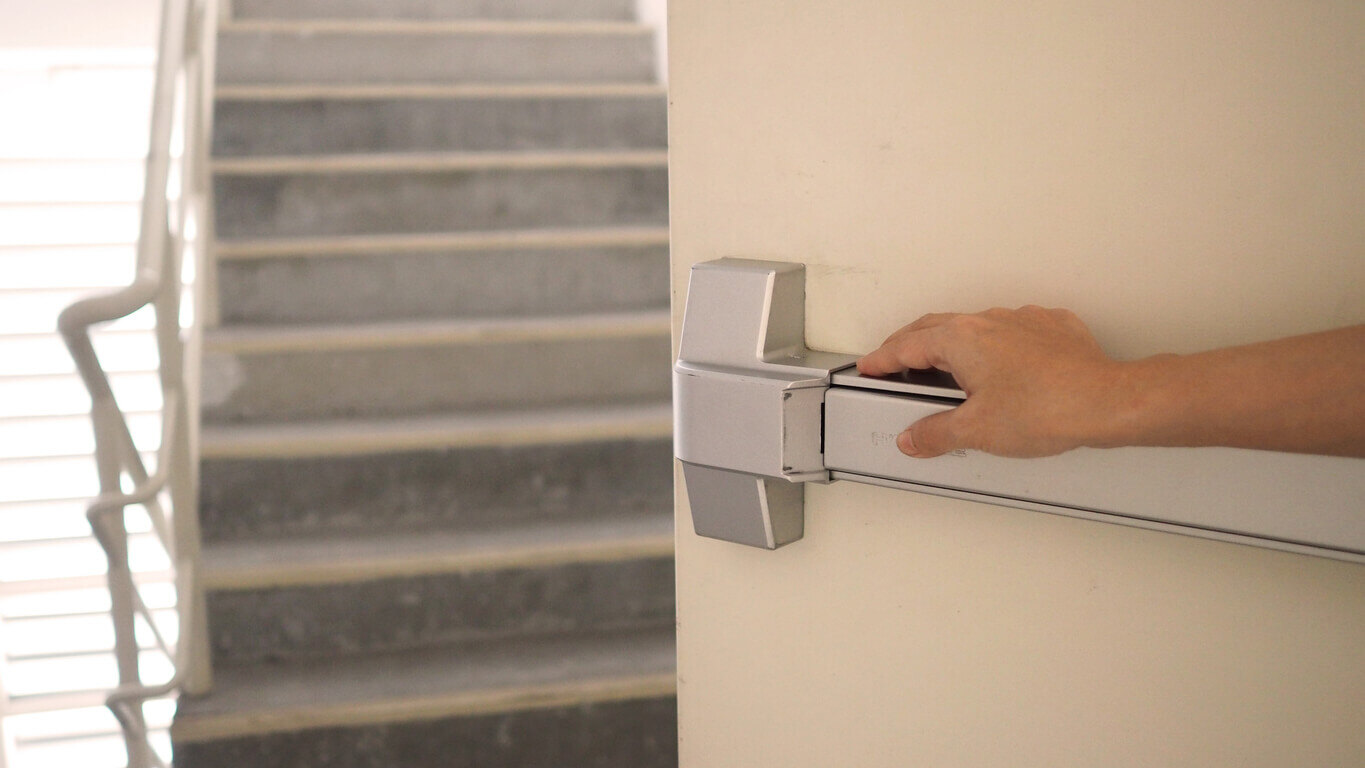How do Fire Doors Help Protect a Facility?
Fire doors are a type of passive fire protection system that slow or stop fire and smoke spread. They isolate damage into one area, allow safer escape routes, and improve access for emergency services personnel.For any kind of business, protecting customers and staff is a vital part of the job. That means implementing a range of safety measures in both active and passive fire protection systems—like a fire door.
The most comprehensive protocols include active and passive fire protection systems. Active fire protection, such as fire sprinklers or fire extinguishers, require action to work in the event of a fire. But passive fire protection (PFP), like a fire door, is just as important and does not require action to aid in fire protection during an emergency.
PFP slows or stops fire and smoke, keeping them in one area to allow safer escape routes, or access for emergency personnel. These passive systems also isolate potential damage into one area or path. Because of this, having a fire door in your fire protection plan could make a huge difference.
How do Fire Doors Work?
A fire door, or a fire-rated door, is a heavy-duty door built to withstand limited exposure to a fire for 20 to 180 minutes. All door components - from hinges to frame - are designed for fire mitigation.
While they may resemble traditional doors, fire doors are a niche all their own. These doors are made with materials like steel, timber, and aluminum. Often, they will have an inner core comprising something like particleboard or flax board, though some are designed to be hollow. They also have seals along the frame so fire and smoke cannot escape.
What makes this type of door particularly effective is its intumescence. This means the seal around the door expands when heated. So when a fire encroaches, the sealing expands, preventing smoke or fire from getting through.
Since they must be closed to be effective, these doors have a closing mechanism that forces the door shut during a fire.
To be considered official, the structure must meet the National Fire Protection Association's compliance standards. Specifically, the NFPA 80 Standards for Fire Doors and Other Opening Protectives and/or the NFPA 105 Standard for Smoke Door Assemblies and Other Opening Protectives.
Keep in mind that all of these doors will also have a rating. Created by the NFPA, these ratings represent the fire exposure time (in minutes) a door can withstand without breaking. The ratings are 20, 45, 60, 90, and 180. The appropriate rating for the area the door is in depends on the context. For instance, a hallway needs to have a 45-rated door.
The number of fire doors a building needs depends entirely on the building itself. However, doors will be needed in areas like stairwells, building entrances and exits, and any doorways that lead to other buildings.
What are the Benefits of Fire Doors?
Other than containing a fire, there are a handful of other benefits to installing them:
- Safety: They contain the fire and provide safe egress routes for people inside.
- Legal: They ensure compliance with fire safety regulations and building codes.
- Financial: They can potentially reduce insurance premiums due to improved fire safety. It may also reduce damage incurred in a fire, resulting in less financial loss.
As you can see, there are myriad reasons, outside of the regulatory ones, to include these doors in your fire protection plan.
Do Fire Doors Require Maintenance and Inspections?
As with any part of a building, fire doors require some maintenance. They are not maintenance-heavy mechanisms; however, it is recommended that you receive a passive fire protection inspection at least once per year. Doing this and keeping the doors up to code also complies your building with local law.
During an inspection, professionals can tell if parts of the door need to be replaced or repaired. This is especially important for the door seal. If the seal is not in good shape, it may not expand and allow the door to properly seal off smoke or fire in an emergency.
There are a few common problems to keep an eye out for in between inspections:
- Missing or damaged door seals
- Fire labels unclear or missing
- Gapping around the door
- Broken or damaged door
Although some wear and tear is inevitable, there is one thing you can do to help maintain the integrity of your doors—clean them. By focusing your cleaning on the gaps or frames, the door is more likely to close and seal properly. Just be mindful while cleaning that you don’t put too much stress on the seal and risk tearing it.
There is no definitive lifespan for a fire door. How long they last depends upon how often they are used. They should be replaced when they no longer close, have significant gaps, or have irreparable damage.
Keep Your People and Property Safe
Fire doors are vital to any business’s passive fire protection strategy. They impede the path of fire and smoke to protect people and property. As long as they are installed correctly and maintained, they can last a long time.
We highly recommend relying on professionals to ensure proper installation and maintenance. Our fire and life safety experts are well-equipped to install or service fire doors and keep your fire protection plans running smoothly.







